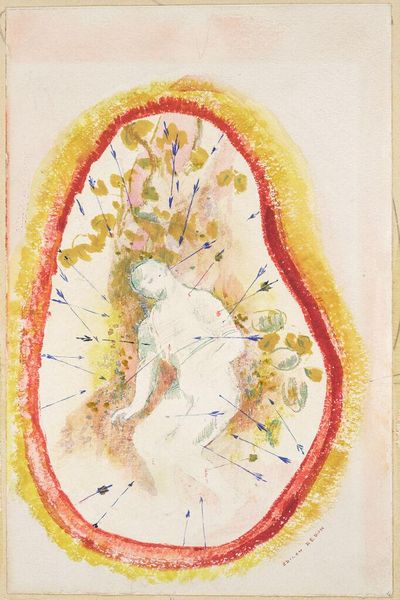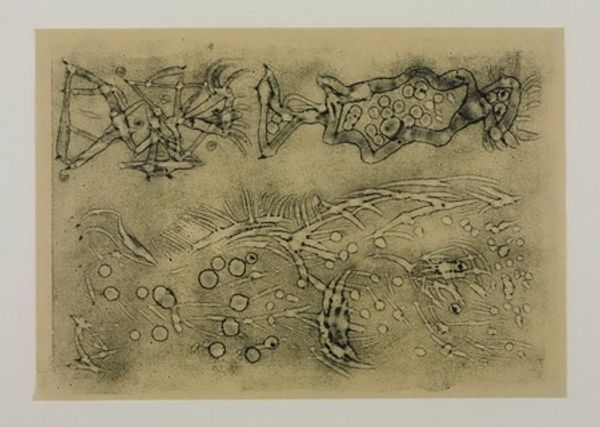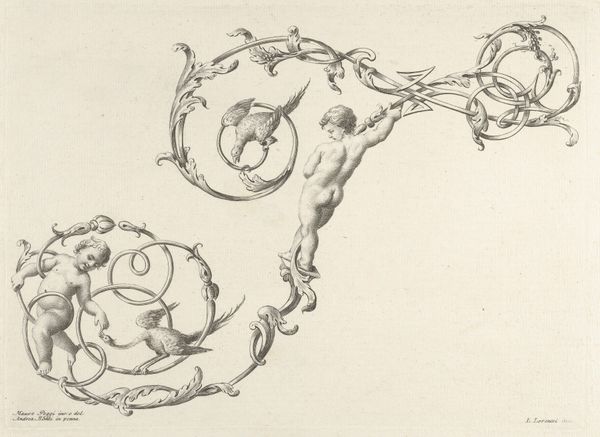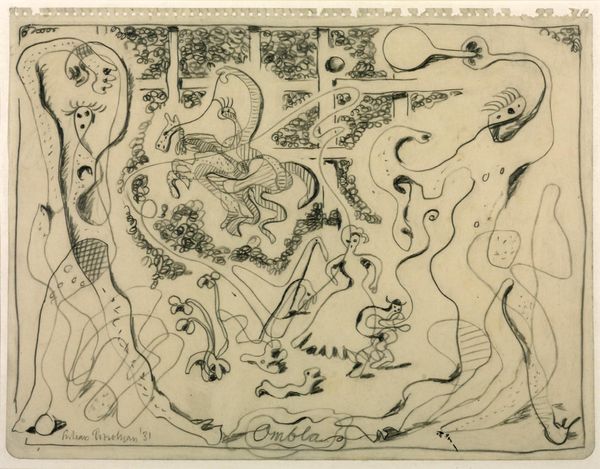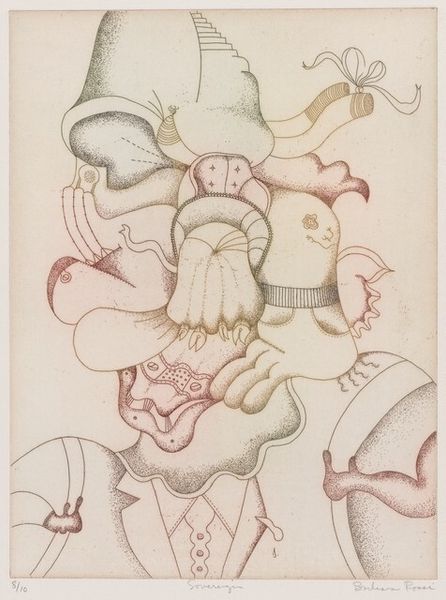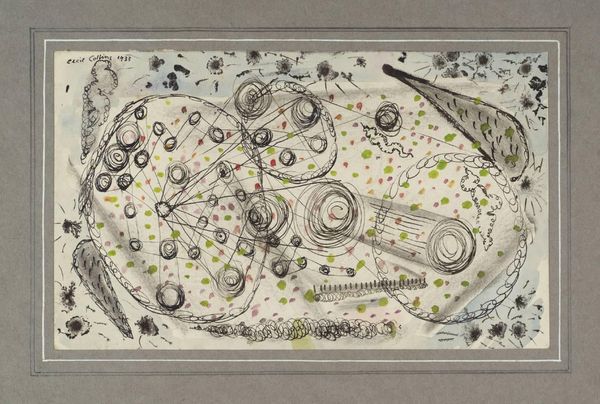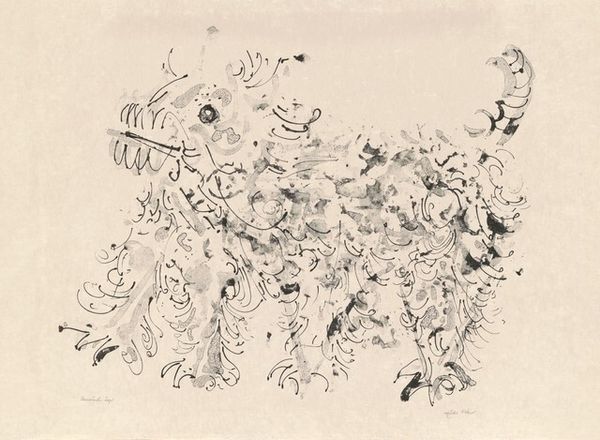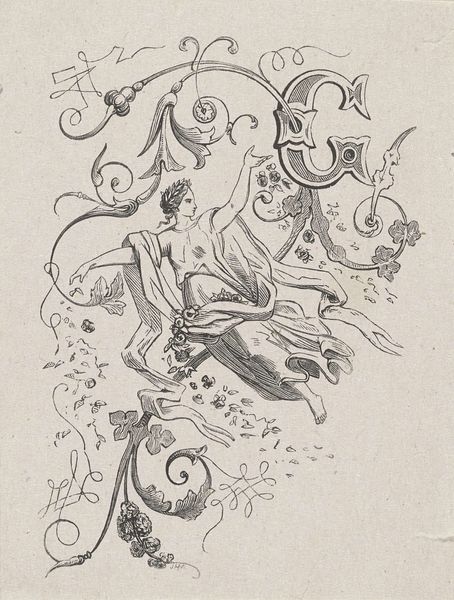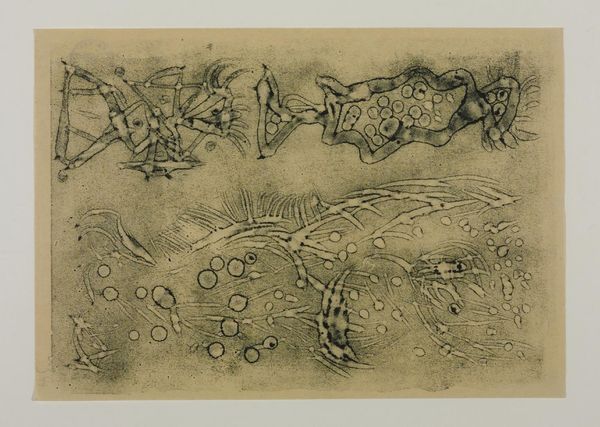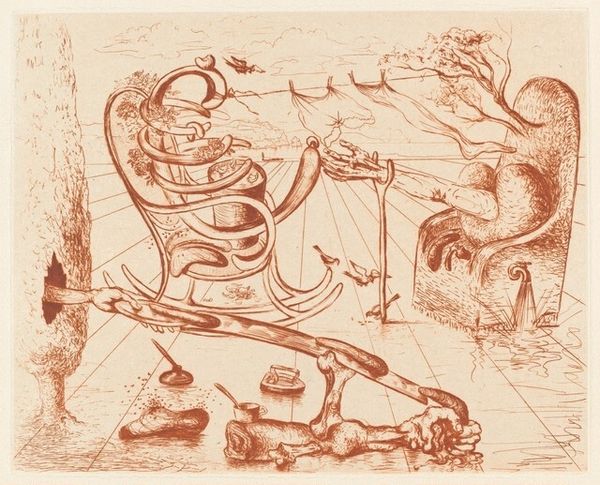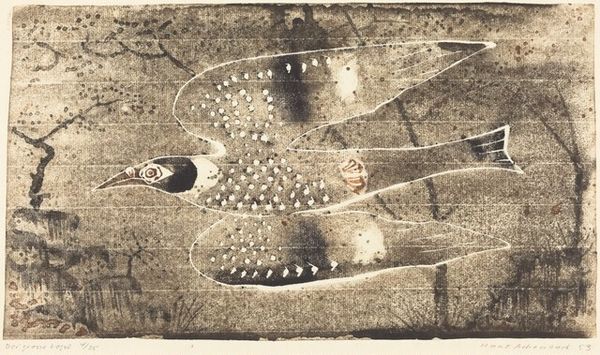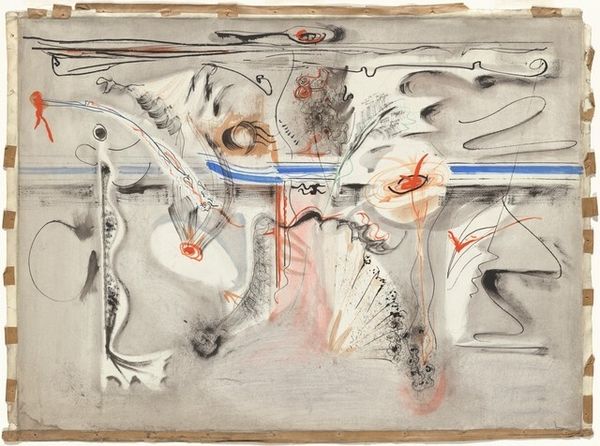
watercolor
#
abstract-expressionism
#
organic
#
watercolor
#
abstraction
Dimensions: overall: 39.8 x 57.2 cm (15 11/16 x 22 1/2 in.)
Copyright: National Gallery of Art: CC0 1.0
Curator: We are looking at Mark Rothko’s “Abstract Composition,” created circa 1944. Executed in watercolor, this piece displays Rothko's developing interest in organic abstraction. Editor: It feels so unresolved to me. There is a strange push-and-pull quality in the arrangement of biomorphic shapes; the high-key colors evoke a dream-like sensibility, a pastel battleground, if you will. Curator: Observe how Rothko divides the composition into distinct horizontal zones. Notice the upper register with its warmer, muted tones—peach, cream, and faded yellow—resting atop the cooler blues and grays of the lower section. Editor: What strikes me are the floral motifs interspersed with forms suggesting seed pods and nascent figures. Knowing this work comes from the mid-1940s, it's hard not to read these emerging forms as suggestive of the struggle for new growth and the search for collective renewal after immense global trauma and suffering. Curator: Indeed. Before his signature color fields, Rothko explored the boundaries of representation through abstraction, using these semi-figurative shapes. The linear elements serve to unite and delineate, forming an integrated visual structure. See how the central cascading form acts as an anchor for the looser, gestural marks around it. Editor: Considering his peers were mostly interested in a heroic, grand-scale masculine vision, Rothko’s foray into softer, almost domestic imagery is somewhat surprising, and very much in keeping with similar efforts of women artists like Lee Krasner and others exploring identity, the domestic, and interiority in the context of a gendered postwar experience. The medium itself, watercolor, also evokes a softness which pushes against any rigid interpretations of his work. Curator: His use of watercolor allows for a unique luminosity and fluidity. The bleeding of colors and the transparency achieved create layers of depth and visual texture, and serve the function of adding an element of structural complexity to what at first seems to be random biomorphic expression. Editor: In its seeming chaos, there's a call for reconstruction, a quiet but assertive hope. I’m struck by Rothko's attempt to visualize hope through his exploration of fluid, organic forms. Curator: A poignant point, reflecting on the inherent tensions and search for structure inherent in this transitional piece. Editor: This conversation has shifted my thinking around this work.
Comments
No comments
Be the first to comment and join the conversation on the ultimate creative platform.
